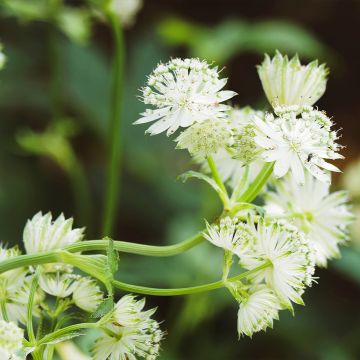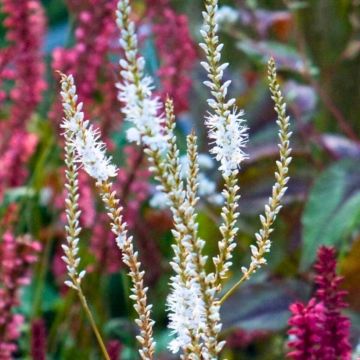

Chrysanthemum Rotes Julchen
Chrysanthemum Rotes Julchen
Chrysanthemum x indicum Rotes Julchen
Garden Mum, Indian Chrysanthemum, Florist's Daisy
Good but young plant small - will need to wait to see it grow.
Henri, 08/04/2025
Special offer!
Receive a €20 voucher for any order over €90 (excluding delivery costs, credit notes, and plastic-free options)!
1- Add your favorite plants to your cart.
2- Once you have reached €90, confirm your order (you can even choose the delivery date!).
3- As soon as your order is shipped, you will receive an email containing your voucher code, valid for 3 months (90 days).
Your voucher is unique and can only be used once, for any order with a minimum value of €20, excluding delivery costs.
Can be combined with other current offers, non-divisible and non-refundable.
Home or relay delivery (depending on size and destination)
Schedule delivery date,
and select date in basket
This plant carries a 12 months recovery warranty
More information
We guarantee the quality of our plants for a full growing cycle, and will replace at our expense any plant that fails to recover under normal climatic and planting conditions.


Would this plant suit my garden?
Set up your Plantfit profile →
Description
Chrysanthemum 'Rotes Julchen' is a chrysanthemum that resembles the famous 'Mei Kyo', but is slightly more compact, slightly earlier, and its small pompom flowers fade to a lighter pink. Countless flowers appear from September on this well-groomed bushy plant, forming a large and wonderful bouquet in shades of pink. This hardy perennial blooms for several weeks, until the first frost, without requiring much care. This autumn daisy is hardy and drought-tolerant and easy to grow in any good garden soil, perfect in a cottage garden or a pot.
Chrysanthemum x rubellum is a herbaceous perennial plant with a woody rhizome, belonging to the Asteraceae family. It is a hybrid obtained by cross-breeding different species from East Asia (Chysanthemum.indicum) and Siberia (C.zawadskii). The cultivar 'Rotes Julchen' was obtained in Germany by Georg Mayer from "Gärtnerei am Nassachtal". It is a seedling of the chrysanthemum 'Julia'. The plant eventually forms a bush 50-55 cm (20-22in) tall and 50 cm (20in) wide, composed of leafy, branched stems which are woody at the base. From early September to late October-early November, this lovely chrysanthemum produces numerous flowers in small double heads, 2-3 cm (1in) in diameter, in small bouquets at the top of the leafy stems. The central disc is a bright dark yellow, on the periphery, thin and very numerous 'petals', change colour as they bloom. When they open, the pompoms are a dark carmine pink, then they gradually change to different shades of pink until they become almost white. The overall effect creates an irresistible bouquet in shades of pink. The leaves are small and resemble miniature oak leaves, triangular to ovate with several lobes and toothed at the edges. They are medium green, and hairy on the underneath. The vegetation is deciduous and dries up in winter; the crown will live for a long time in the garden.
Chrysanthemums are very useful during a slightly less flowery period of the year, and their colours blend remarkably well in autumn. They can be combined with asters in complementary or matching colours. Their blooming period coincides with shrubby salvias, catmints and gauras. These perennials pair particularly well with grasses such as feather grasses, small miscanthus, Muhlenbergia capillaris and foxtail barley (Hordeum jubatum). They are easily grown in pots to adorn balconies and terraces, and make excellent cut flowers.
Report an error about the product description
Flowering
Foliage
Plant habit
Botanical data
Chrysanthemum
x indicum
Rotes Julchen
Asteraceae
Garden Mum, Indian Chrysanthemum, Florist's Daisy
Cultivar or hybrid
Other Chrysanthemum
View all →Planting and care
Autumn daisies generally require a sunny exposure, ordinary, well-worked, slightly acidic, neutral or even slightly chalky soil, fertile and not too dry. They are hardy to -15°C (5°F) at least. The Rotes Julchen variety is fairly drought tolerant, naturally compact and does not require staking, low-maintenance once established, just prune the dry stems in early spring.
To maintain a compact habit, the stems can be shortened in spring, to 30 cm (1 to 12in) to encourage branching. A second pinch in summer will result in more flowers but they will be smaller. Some varieties may require support. Water two or three times a week and apply a liquid feed for flowering plants every eight days from July until the buds start to colour. Garden chrysanthemums perform well in partial shade in warm climates, even in occasionally dry soil, as long as it is deep. They have few pests and diseases, except for slugs and snails in spring.
Planting period
Intended location
Care
-
, onOrder confirmed
Reply from on Promesse de fleurs
Similar products
Haven't found what you were looking for?
Hardiness is the lowest winter temperature a plant can endure without suffering serious damage or even dying. However, hardiness is affected by location (a sheltered area, such as a patio), protection (winter cover) and soil type (hardiness is improved by well-drained soil).

Photo Sharing Terms & Conditions
In order to encourage gardeners to interact and share their experiences, Promesse de fleurs offers various media enabling content to be uploaded onto its Site - in particular via the ‘Photo sharing’ module.
The User agrees to refrain from:
- Posting any content that is illegal, prejudicial, insulting, racist, inciteful to hatred, revisionist, contrary to public decency, that infringes on privacy or on the privacy rights of third parties, in particular the publicity rights of persons and goods, intellectual property rights, or the right to privacy.
- Submitting content on behalf of a third party;
- Impersonate the identity of a third party and/or publish any personal information about a third party;
In general, the User undertakes to refrain from any unethical behaviour.
All Content (in particular text, comments, files, images, photos, videos, creative works, etc.), which may be subject to property or intellectual property rights, image or other private rights, shall remain the property of the User, subject to the limited rights granted by the terms of the licence granted by Promesse de fleurs as stated below. Users are at liberty to publish or not to publish such Content on the Site, notably via the ‘Photo Sharing’ facility, and accept that this Content shall be made public and freely accessible, notably on the Internet.
Users further acknowledge, undertake to have ,and guarantee that they hold all necessary rights and permissions to publish such material on the Site, in particular with regard to the legislation in force pertaining to any privacy, property, intellectual property, image, or contractual rights, or rights of any other nature. By publishing such Content on the Site, Users acknowledge accepting full liability as publishers of the Content within the meaning of the law, and grant Promesse de fleurs, free of charge, an inclusive, worldwide licence for the said Content for the entire duration of its publication, including all reproduction, representation, up/downloading, displaying, performing, transmission, and storage rights.
Users also grant permission for their name to be linked to the Content and accept that this link may not always be made available.
By engaging in posting material, Users consent to their Content becoming automatically accessible on the Internet, in particular on other sites and/or blogs and/or web pages of the Promesse de fleurs site, including in particular social pages and the Promesse de fleurs catalogue.
Users may secure the removal of entrusted content free of charge by issuing a simple request via our contact form.
The flowering period indicated on our website applies to countries and regions located in USDA zone 8 (France, the United Kingdom, Ireland, the Netherlands, etc.)
It will vary according to where you live:
- In zones 9 to 10 (Italy, Spain, Greece, etc.), flowering will occur about 2 to 4 weeks earlier.
- In zones 6 to 7 (Germany, Poland, Slovenia, and lower mountainous regions), flowering will be delayed by 2 to 3 weeks.
- In zone 5 (Central Europe, Scandinavia), blooming will be delayed by 3 to 5 weeks.
In temperate climates, pruning of spring-flowering shrubs (forsythia, spireas, etc.) should be done just after flowering.
Pruning of summer-flowering shrubs (Indian Lilac, Perovskia, etc.) can be done in winter or spring.
In cold regions as well as with frost-sensitive plants, avoid pruning too early when severe frosts may still occur.
The planting period indicated on our website applies to countries and regions located in USDA zone 8 (France, United Kingdom, Ireland, Netherlands).
It will vary according to where you live:
- In Mediterranean zones (Marseille, Madrid, Milan, etc.), autumn and winter are the best planting periods.
- In continental zones (Strasbourg, Munich, Vienna, etc.), delay planting by 2 to 3 weeks in spring and bring it forward by 2 to 4 weeks in autumn.
- In mountainous regions (the Alps, Pyrenees, Carpathians, etc.), it is best to plant in late spring (May-June) or late summer (August-September).
The harvesting period indicated on our website applies to countries and regions in USDA zone 8 (France, England, Ireland, the Netherlands).
In colder areas (Scandinavia, Poland, Austria...) fruit and vegetable harvests are likely to be delayed by 3-4 weeks.
In warmer areas (Italy, Spain, Greece, etc.), harvesting will probably take place earlier, depending on weather conditions.
The sowing periods indicated on our website apply to countries and regions within USDA Zone 8 (France, UK, Ireland, Netherlands).
In colder areas (Scandinavia, Poland, Austria...), delay any outdoor sowing by 3-4 weeks, or sow under glass.
In warmer climes (Italy, Spain, Greece, etc.), bring outdoor sowing forward by a few weeks.



















































